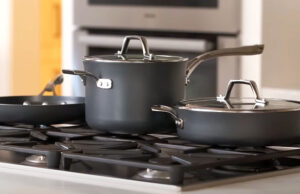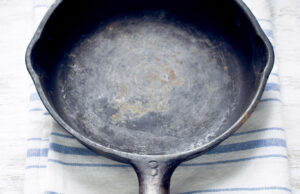Have you ever wondered if it’s safe to put glass in the oven? It’s a question that pops up quite often in the kitchen, especially when you’re in a rush to get dinner on the table or trying to bake your favorite dish. While glass is used in many oven-safe cookware products, it’s important to know which types are safe and how to handle them correctly. In this guide, we will explore everything you need to know about using glass in the oven, including tips for safety and helpful recommendations. So, let’s dive into the world of glass cookware!
What Types of Glass Are Safe for the Oven?
When it comes to putting glass in the oven, not all glass is created equal. Some types of glass can withstand high heat, while others might shatter or break. Understanding the different types of glass cookware and knowing which ones are safe for oven use is the key to avoiding accidents and making your cooking experience smoother.
1. Tempered Glass
Tempered glass is the most common type of glass used in oven-safe cookware, including baking dishes, casserole dishes, and even some glassware like Pyrex. This type of glass is specially treated to be heat-resistant, which means it can handle the heat inside your oven without breaking. Tempered glass is designed to withstand thermal shock, which means it won’t shatter if it’s exposed to sudden temperature changes, like moving it from a hot oven to a cold countertop.
Here’s what makes tempered glass safe for the oven:
- It’s heat-resistant and can typically handle temperatures between 400-500°F (204-260°C).
- It’s less likely to break or crack from thermal shock compared to regular glass.
- It is commonly used for bakeware, casserole dishes, and other kitchen glassware.
However, even though tempered glass is designed to handle heat, it’s still important to follow safety guidelines to avoid accidents.
2. Borosilicate Glass
Borosilicate glass is another type of glass that is commonly used for bakeware. It is also heat-resistant and can handle extreme temperature changes. Borosilicate glass is often used in laboratory glassware due to its ability to withstand high temperatures and sudden shifts in heat. While not as commonly found in everyday kitchen glassware, you may find some high-quality oven-safe dishes made from borosilicate glass.
Key points about borosilicate glass:
- It is more resistant to thermal shock than tempered glass.
- It can handle temperatures up to 450°F (232°C) or higher, depending on the manufacturer.
- It’s more durable than standard glass.
Borosilicate glass is excellent for those who are looking for cookware that can handle intense temperature changes. If you have a piece of glassware made from borosilicate glass, it’s likely safe to use in the oven, but always check the manufacturer’s instructions.
3. Regular Glass
Regular glass, like the glass from drinking glasses or decorative items, is not safe for oven use. This glass has not been treated to withstand high temperatures or thermal shock, and it can easily break or shatter when exposed to heat. If you accidentally place a regular glass item in the oven, it could crack or even explode, causing a dangerous mess.
Avoid putting regular glass in the oven at all costs. Stick with tempered or borosilicate glass for your oven-safe cookware.
To keep it simple, always choose tempered glass or borosilicate glass when you want to use glass cookware in the oven. These two types are designed to handle heat and temperature changes without breaking. Regular glass should never be used in the oven as it can shatter under heat stress.
Tips for Safely Using Glass in the Oven
Now that you know which types of glass are safe to use in the oven, let’s explore some important tips for using glass cookware safely. Following these tips will help you avoid accidents and make sure your glass dishes stay in top shape for years to come.
1. Always Check the Manufacturer’s Instructions
The most important step when using any cookware, especially glass, is to always check the manufacturer’s instructions. They will tell you the recommended maximum temperature for the cookware and any other precautions to take. This is especially important for tempered glass or borosilicate glass dishes, as they might have specific temperature limits.
Some glass cookware items are only safe up to certain temperatures, so knowing these limits will help you avoid accidents.
2. Avoid Sudden Temperature Changes
While tempered glass and borosilicate glass are designed to resist thermal shock, it’s still a good idea to avoid extreme temperature changes. For example, don’t take a hot glass dish directly from the oven and place it on a cold countertop or in the sink with cold water. Sudden temperature changes can cause the glass to crack or shatter.
To avoid thermal shock:
- Let the glass dish cool down gradually before washing it.
- Avoid placing it in very cold water immediately after baking.
3. Use Caution with Glass Lids
Many glass baking dishes come with glass lids, but not all glass lids are designed to go in the oven. If your glass dish has a lid, make sure it is labeled as oven-safe. Some glass lids are made from thinner glass that may not withstand high heat. Always double-check the lid’s specifications before placing it in the oven.
4. Don’t Overheat Glass Cookware
Glass cookware is best used at moderate temperatures. Most glass dishes are safe for baking and roasting at temperatures up to 400°F (204°C) to 450°F (232°C), but going beyond that can put the cookware at risk of breaking. Avoid using your glass cookware for broiling, as the intense heat from a broiler can cause the glass to crack or shatter.
5. Use Oven Mitts When Handling Hot Glass
Glass can get very hot in the oven, so always use oven mitts when handling glass cookware. Even if the dish is oven-safe, the glass itself will still get hot enough to burn you. Be sure to give yourself plenty of time to move the dish safely out of the oven, and never touch the dish with bare hands.
6. Keep Glass Away from Direct Flame
While glass cookware can handle heat from the oven, it should never be exposed to direct flame. This means you should avoid using glass cookware on a stovetop or under the broiler unless it is specifically designed for those purposes. Direct exposure to a flame can cause the glass to break or even explode.
7. Inspect Glass for Cracks or Chips
Before using any glass cookware, always inspect it for cracks, chips, or any other damage. Even small cracks can cause the glass to shatter when exposed to heat. If your glass dish is damaged, it’s safer to replace it than to risk using it in the oven.
8. Don’t Stack Glass Cookware
Avoid stacking multiple glass dishes on top of one another when placing them in the oven. The pressure from the stacked dishes could cause them to crack or break, especially if they’re not made from high-quality materials. Make sure there’s enough space around each dish for proper air circulation in the oven.
By following these safety tips, you can make the most of your oven-safe glass cookware without worrying about breaking or cracking it. Always read the instructions, avoid sudden temperature changes, and handle glass with care to ensure a smooth and safe cooking experience.
How to Clean Glass Cookware After Using It in the Oven
After using glass cookware in the oven, it’s important to clean it properly to maintain its appearance and longevity. Glass is relatively easy to clean, but there are a few tips to keep in mind to avoid damaging it.
1. Let the Glass Cool Down
Before cleaning your glass cookware, always allow it to cool down. Placing a hot glass dish into cold water can cause it to crack. Let it sit at room temperature for a few minutes to cool before washing.
2. Use Warm, Soapy Water
To clean your glass cookware, use warm, soapy water and a soft sponge or cloth. Avoid using harsh scouring pads, as they can scratch the surface of the glass. For tough stains or baked-on food, you can soak the dish in warm water for a few minutes before gently scrubbing.
3. Avoid Abrasive Cleaners
When cleaning glass cookware, steer clear of abrasive cleaners or steel wool. These can damage the surface of the glass, making it more prone to cracking. Stick to gentle dish soap and a soft cloth to keep the glass looking good as new.
4. Use Baking Soda for Stubborn Stains
If your glass cookware has stubborn stains, you can make a paste using baking soda and water. Apply the paste to the stained areas and let it sit for a while before scrubbing gently with a soft sponge. Baking soda is a natural and effective way to remove stains without damaging the glass.
5. Dry Thoroughly
After washing, dry your glass cookware thoroughly with a soft towel to avoid water spots. Allow the dish to air dry if needed. Make sure the glass is completely dry before storing it to prevent any moisture from building up.
Cleaning glass cookware is easy as long as you follow a few simple guidelines. Allow the glass to cool down, use gentle cleaners, and avoid abrasive materials to keep your cookware in great condition.
Final Thoughts
I hope this article helped you understand the ins and outs of using glass in the oven! Glass can be a fantastic addition to your kitchen, as long as you choose the right type and follow safety tips. With the right precautions, you can safely bake and cook with glass dishes without any worries. Happy cooking!
Frequently Asked Questions
Is it safe to put glass in the oven?
Yes, it’s safe to put tempered glass and borosilicate glass in the oven, but regular glass should never be used as it can break easily.
Can I use a glass casserole dish in the oven?
Yes, most glass casserole dishes are safe to use in the oven, as long as they are made from tempered or borosilicate glass.
Do I need to preheat the oven when using glass cookware?
Yes, preheating your oven is recommended for even cooking and to ensure your glass cookware handles the heat properly.
Is it safe to put a glass lid in the oven?
Glass lids are safe to use in the oven only if they are marked as oven-safe. Always check the manufacturer’s instructions before using a glass lid in the oven.
Can glass bakeware crack in the oven?
Yes, glass bakeware can crack if exposed to sudden temperature changes or if it’s made from regular, untempered glass.
Do I need to use oven mitts when handling hot glass?
Yes, always use oven mitts or pot holders when handling hot glass cookware to avoid burns or injuries.
Can I put a glass baking dish on the stovetop?
No, glass cookware should never be used on the stovetop unless it is specifically labeled as stovetop-safe.
Is borosilicate glass better than tempered glass for the oven?
Borosilicate glass is more resistant to thermal shock than tempered glass, but both are safe for oven use when handled correctly.



